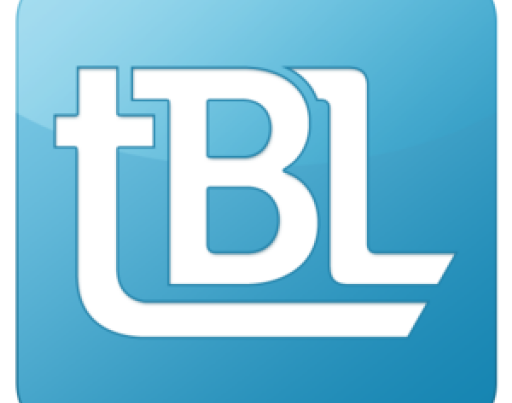This post originally appeared on Marketplace Partner blog MRI Software and is republished with permission. Find out how to syndicate your content with theBrokerList.

Part two of four articles dedicated to ‘business resilience’ in the world of the ‘new normal’
This is the phase we are currently working in (April-May 2020) which is mainly focused on keeping buildings in the real estate portfolio either closed successfully and maintained and secured and/or ensuring the ones that need to be open for limited part-time occupancy are safe, secure and healthy for limited occupancy by employees.
There has also been phenomenal proof during the use of a hammer for our “shelter-in-place” dictate that remote working can be effective. This has been picked up by the media looking for new news items as journalists could no longer report on the glamorous worlds of the rich and famous so they have examined topics on the “new normal” and focused on under reported topics like the “workplace”. As Kate Lister, an expert in remote working and key leader in WE (not the Madonna movie on Wallis and Edward, but the IFMA Community, Workplace Evolutionaries), “the genie is out of the bottle and can’t be put back” talking about working remotely which had great resistance from management through the years. Eight years ago, the then CEO of Facebook called all remote workers back to their offices in Silicon Valley as she thought they were ‘hiding’ in their homes. So much for trust.
At the same time, this is also the period to prepare for the next phase when the world opens its doors again and which is currently just beginning, the ‘Recover’ Phase. However, these concepts and action items, as Dr. J. Allen Director of Harvard’s Healthy Buildings Program has said, “Everyone has to be really clear, there is no such thing as no risk.” The goal of this phase is to reduce that risk and begin to work on the UN’s Sustainable Development Goals (SDGs are shown in the previous section of this series of articles) and at the same time follow the short term strategic plan that fits the current scenario.
The following are some action plans for this first phase based on categories:
1. The Workplace
What is needed immediately is data on the existing portfolio of buildings which includes information on the location of each rented or owned property, the local conditions (including the latest data on the virus), as well as regional and country information and any current new legal or government regulations. Buildings’ inventories should include basic data on both the condition of the exteriors and interiors which will be used for the preparation for occupancy again in the next phase. Current exterior information should include the existing condition of exterior cladding and the roof. Interior information should include existing as-built floor plans and major equipment information along with preventive maintenance schedules and history.
If buildings or floors of a building are leased, the critical dates are required. It is also necessary to have an inventory of current capacity, utilization and occupancy for each floor and each business/functional unit required usage. Then you also need to determine what kind of workplace policies you have determined for the next phase: move to all or partial reservable desks; reassign existing workstations according to new ways of working or assign people to fixed desks/workstations and create schedules for occupancy. Depending on the tools you use (see Technology section below), you should be able to work out new space plans based on new configurations following existing requirements for physical distancing (see Technology section below). The “foundation” of planning for the re-entry in the next phase is:
- Hazard Elimination (the hammer of ‘shelter in place’)
- Personal Substitution (scheduling bringing key employees back in stages)
- Engineering Control (see Operation below)
- Administrative Controls (See sections below and includes change management and signage programs )
- Personal Protective Equipment (PPE) (provide protective gear like masks or other devices and disinfectants in critical and common areas)
2. The Workforce
Taking care of employees is now, more than ever, a top priority for organizations. HR should prepare the workforce for re-entry and should be leading the efforts to try and alleviate any anxieties (physically, emotionally and psychologically) of returning to work. There should be a detailed change management plan in place.Also what should be provided to the Taskforce is the employee/contractor list of who is returning with information on the type of work area/workstation required according to their job category, which phase/shift they will be moved into which building, and/or how many days/week they will be working remotely There also may be a classification as to which occupants are immune and which are not (this looks unlikely that one who has had the virus previously will not mean they are immune, but with the latest data coming from the scientists daily, their findings changing often, will have to monitored closely).. Social distancing strategies will also have to be determined based on the latest scientific findings. The current distancing recommended (CDC) reveals that a 6’ separation greatly reduces the transmission of harmful droplets in the air transmitting to another person.Added to the FM workforce could be people who could also assume the role of a Covid-19 Block Captain(s), PPE Training Experts, Quarantine Marshalls and Supply Managers.
3. Strategic Planning
With the above baseline information, it is possible to execute various ‘what-if’ scenarios for both short term and long term planning. One CEO, who has been overseeing Morgan Stanley’s strategic planning, is James Gorman who has himself recovered from COVID-19. He believes that his company will more than likely come out of this crisis with a smaller real estate footprint due to their successful remote work program which involved 90% of the financial institutions 80,000 employees. Its positive results he credits both his technology and operations teams. According to Nestor Rindon, Vice President at Morgan and one of the key people involved in the team that Mr. Gorman was referring to, has said ‘planning moving back to the office changes daily (for a phased move which is scheduled for May, June and September) and is HR driven.’ There are two cardinal rules: 1) don’t ______with the revenue generating function and 2) cut costs in the back office.”
4. The Market (RE)
Due to small business and retail closures, as well as corporations realizing they may need less space due to successful remote working from home experiences necessitated by the hammer. Commercial real estate brokers are suffering from the pandemic and do not see much good news on the horizon. The one positive light for them at the end of this dark tunnel is that due to Social Distancing, organizations which still need workspaces will require enough space to include layouts that take Social Distancing. into consideration.
5. Facility Operations/ Buildingomics
There is the current need to follow the most up to the minute guidelines from the CDC, EPA, OSHA, WHO and any other national, regional or local health services organization. For buildings that need to be closed, it is most likely you have done procedures like the following: keep HVAC running to prevent the growth of mold.
For preparation of the next phase, the following 9 areas (all pertaining to SDG#3- ‘good health and well-being’) could be used as a foundation for the short term plan:
- Air quality – choose supplies, furnishings and materials with low chemical emissions; check for legacy pollutants (i.e. lead, asbestos), use vapor barrier to limit any intrusions; humidity levels should be 30-60% to mitigate odor issues.
- Thermal health – meet minimum and comfort standards for temperature and humidity and keep both consistent throughout the day (as well as monitoring).
- Moisture – conduct regular inspections of roofs (see technology section), plumbing, ceilings and HVAC equipment and determine underlying source if a problem is found.
- Dust and pests – use filter vacuums which are high-efficiency and clean surfaces more than normal cleaning schedules; develop pest management plan.
- Safety and security – ensure fire safety and carbon monoxide standards are met and emergency action plans are available to all building occupants.
- Water quality – meet the US National Drinking Water Standards. Install water purification system for removal of contaminants; prevent water stagnation in pipes.
- Noise – control as much exterior and internal noise as possible.
- Lighting and views – during the day provide as much natural light as possible and/or blue-enriched lighting; plan to provide as much exterior views for workers and incorporate as much nature as possible in work environments.
- Ventilation – meet or exceed air ventilation guidelines; monitor ventilation in real-time.
6. Technology
If you have not done so to date, now is the time to join the 4th Industrial Revolution (as described in part one of this series of articles). In order to collect and report on all of the data that you need for the action plans, you will need to implement a computer-aided facility management system (CAFM) or an integrated workplace management system (IWMS). This becomes the centralized repository of existing conditions and other baseline data, as well as providing strategic planning, space planning (programming), move management, room booking and financial analysis.
- CAFM & IWMS: CAFM consists of basic inventory data, maintenance functionality, strategic and tactical planning applications with integration to 3D models of buildings (BIM) or 2D floor plans (CAD). IWMS is for more complex portfolios of buildings (often with both owned and leased buildings) with CAFM functionality plus robust financial capabilities (including FASB and IASB accounting). Technology is critical for the planning of moves back into the office for this phase: 1) new space plans based on different algorithms that look at various social distancing guidelines and new plans that take some desks/workplaces out of use when using those guidelines and 2) move management software which schedules the movement of workers back into the office. Either of these systems allow for whatever dance steps one has to prepare for to respond to changes in plans which are predicted to come in the next phase, like the virus is predicted to come back with a force again in the fall.
- BIM (Building information Model): Many of us have been singing the values of BIM and the creation of ‘digital twins’ of cities (Singapore) and buildings (integrated with IWMS data) for virtual communication for management, workers, designers and clients, but the costs were more prohibitable until lately when we can now view BIM models on smartphones, iPads and laptops. Reduced costs and the hammer of forced isolation has made necessity the mother of invention and now we have to turn to BIM to understand the progress of both new construction and rehabilitation projects virtually as we no longer have the luxury of physically going to the site.
- CAD: It is unlikely that the readers of this article are not using this tool for rendering as-built floor plans, and can be produced from a BIM representation.
- GIS (Geographic Information Systems): These systems which most universities have implemented for campus maps, are perfect for understanding site conditions, transportation patterns and now, Coronavirus outbreaks and deaths/city, and treatment centers as depicted on a map.
- 3D and 4D Printing: These are being used today for everything from equipment to building parts to entire structures which could be useful if there is any problem with the supply chain delivering products due to interruptions in service because of the pandemic.
- VR/AR (Virtual Reality/Augmented Reality): While the advantage of utilizing these technologies have been known for years as they allow a more visual understanding of a design concept or construction project, the cost is rapidly declining which should make including these tools more affordable to facility management professionals.
- Project Management: As projects will increase in the next phase, this is the time to experiment with project management tools. This tool allows for the user to capture the critical data for every phase of the project for reduced risk, better scheduling and more informed decision making.
- IOT (Internet of Things): Sensors can be applied throughout the workplace for inventory management, utilization tracking, waste reduction, remote monitoring; or workforce badges can be utilized for tracking and monitoring collaboration (if permitted by law/and/or the individual.
- AI/ML (Artificial Learning and Machine Learning): These technologies can be utilized for advanced planning, water management, building maintenance, lease abstracting, fault detection and parking assistance.
- Drones: These flying ‘creatures’ can be utilized for hard to reach facility condition assessment, inspections of remote site locations, monitoring construction projects, delivery of supplies or equipment and aerial views of projects at any stage of construction, as well as security.
- Robots: currently serve as security guards, delivery assistants, janitors, as well as security guards.
- Facial/voice Recognition: By using biometrics (a person’s unique biomorphic trait like face, eyes) instead of physical items for access which could replace cards or physically touching a surface during this time of virus transmission. Also consider voice activation tools.
- Infrared Fever Screening System: this was developed by the Singapore government during the SARS epidemic at the turn of the century and recommended by Gensler in a recent webinar which was recorded on the IFMA website (#5), www.ifma.org.
- Large TV-like Screens: Since Social Distancing will most likely not encourage “drop bys” to see what other people are working on, large screens could be placed in a central location which project images of projects that teams or individuals are working on. These were used in a NYC media firm’s work environment very successfully.
The next article in this series will focus on the ‘Recover’ stage. If you have an immediate need to address the unique workplace planning and management challenges COVID-19 has created, please contact the MRI Manhattan team for a demo or more information.
The post Respond: The dance steps required today before we return to the workplace appeared first on MRI Software.



